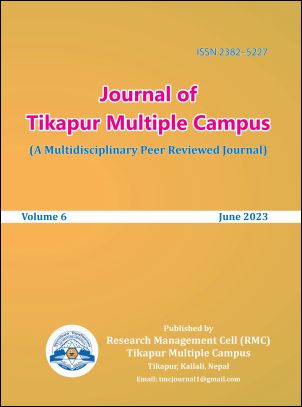Tamba and Damphu in Tambakaiten as the Network of Tamang and Songs
DOI:
https://doi.org/10.3126/jotmc.v6i01.56302Keywords:
hybridity, quasi-subjective, genealogy, historian, actor-network theoryAbstract
Santabir Lama’s Tamba Kaiten is a cultural documentation of Tamang community focusing especially in central region of Nepal, about cultural and religious rites and rituals through songs which are mentioned as whai and according to Macdonald (1983) hvai. Tamba is known as historian or cultural poet of Tamang who sings songs of genealogy, cultural rights and rituals along with different activities of daily lives and origin of the Earth and human beings. Kaiten is the document. Likewise, the Damphu is amusical instrument which has the most crucial role in singing and dancing. This research explores the network of Tamang culture and songs by Tamba from Bruno Latour’s perspective of Actor-Network theory. The study of different issues around us is not possible only through social perspective which centralizes human beings; there is the need of scientific study to focus both on quasi-subjective and quasi-objective agents. The Damphu also completes Tamba to contribute the network of Tamang culture of whai. The study is significant to study hybridity of actors in Network theory which doesn’t indicate only humans but also non-humans which play an avoidable role to complete a structure as being integral element.
Downloads
Downloads
Published
How to Cite
Issue
Section
License

This work is licensed under a Creative Commons Attribution-NonCommercial 4.0 International License.
This license enables reusers to distribute, remix, adapt, and build upon the material in any medium or format, so long as attribution is given to the creator. The license allows for commercial use.




